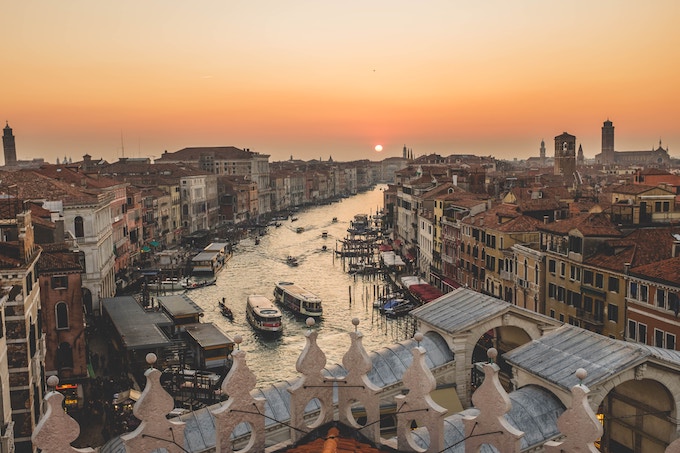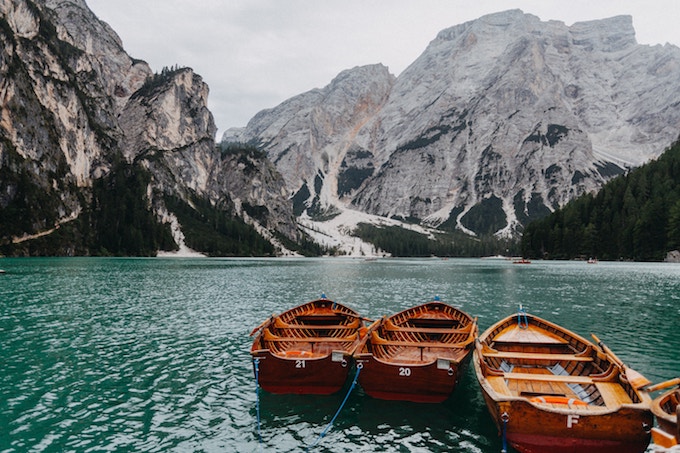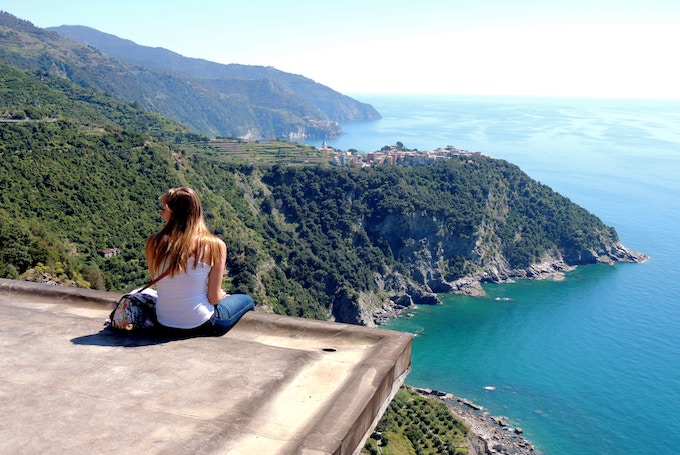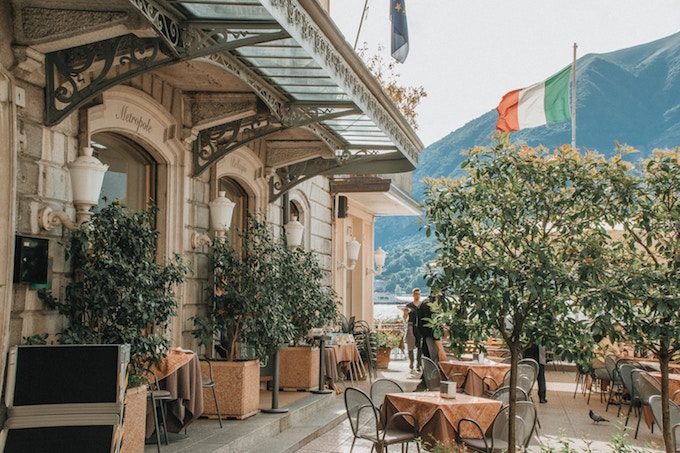Picture this: rolling vineyards, colorful cliffside villages, sparkling turquoise waters, and copious amounts of wine. If that sounds like a dream come true, then Italy should be at the very top of your travel bucket list.
Italy isn’t always the cheapest European country to explore, but if you’re traveling on a tight to mid-range budget, there are plenty of ways to avoid excessive spending, even to this classical destination. And believe us—once you go, you’ll want to keep going back.
The best time to visit Italy for every budget
Like any popular travel destination, the cost of flights is one of the biggest factors impacting your spending. Flexibility in terms of when you travel and the route you travel through is key to finding cheaper flights, accommodation, and even gastronomy prices. That means if you’re really looking to cut costs, you may not be able to visit during your preferred season, but you can still have an amazing time!
Italy is a real travel hotspot, receiving 65 million visitors in pre-pandemic 2019, according to the Italian National Institute of Statistics, so there’s no doubt that the cost of flights can skyrocket—especially in the peak season between mid-May and mid-September. Hence, traveling to Italy during the low season could easily do wonders for your wallet. If you’re not a big fan of cold weather, consider visiting during early spring and fall instead, and keep in mind that even in December and January, southern Italy often has quite warm and sunny days lined up for you.
Traveling to Italy on a small to mid-range budget
For the mid-range traveler, it can be worth going in high season but being mindful of where your money is spent and identifying the pain points for your Italy budget so that you can choose where spending more is worth it and where you can cut costs simply by being well prepared and choosing cheaper alternatives.
How to get around
Obvious as it may be, walking is not only one of the best ways to experience a city but also the cheapest. Stroll at your own pace, pause for photos, and feel the historic atmosphere, stopping at cafes and shops along the way. If the sights you’re interested in seeing are more spread out, public transport is well developed in many cities like Milan and Rome. Subway, or metro if you will, is often fast and easy, while trams and buses may be trickier to know where to get on and off but compensate by providing some scenery along the ride. For smaller towns and rural areas, consider renting a bike! Costs may vary, but renting a bike should be roughly €15 EUR per day.
For traveling between cities, regional trains and buses are great affordable options. You may want to avoid the Italian high-speed rail for cost effectivity, but the slower train will still get you from, for instance, Florence to Rome in under 4 hours at around just €20 EUR. Buses and trains will also typically bring you straight downtown, avoiding extra train or taxi costs from an airport to the city center.

Where to stay
In bigger cities, such as Rome, Milan, and Venice, accommodation can be quite expensive. So, if you’re keeping within a small to mid-range budget, consider booking your stay in a neighboring town that is easily accessible by public transit. If staying in the city, hostels and cheap Airbnb are going to be your best bet, and booking way ahead is more essential than ever! For the really frugal, a hostel bunk bed in a dorm can cost as little as €25 EUR per night. If you’re traveling with a group of friends, booking out a whole dorm of 4, 6, or 8 beds may be an idea to consider if you’re not keen on sharing living space with other travelers.
Activities to do
When in Italy, activities are where you can probably save the most. Unless shopping is at the top of your to-dos, there are plenty of activities to enjoy that cost little to nothing. After all, exploring Italy requires no more than walking around and soaking in the incredible landscapes and culture.
- Walking tours are usually free and a great way to get to know a city with a local guide. They often ask for a small voluntary tip at the end, which is only fair, and at least you know you’re not sponsoring some major money-making business. Ask your hostel or Airbnb host if they offer anything similar.
- Churches and basilicas offer a peek into the rich history and culture and often have artwork to rival what you can see at a museum. Entry typically is free, but a small donation may be recommended, of course, and consider dressing respectfully and keeping your voice down.
- Have a picnic at a local park or public space. People-watching with a cappuccino or snack in hand can be an entertaining pastime. As you probably know, Italians are bread-loving people, with focaccias and shared pizzas being prime picnic fodder, just remember not to leave your pizza carton behind when you leave.
- Museums are another affordable activity that often offers free admission on specific days or promotions at certain times of the day. About 480 state museums (including the Colosseum in Rome) are currently free to the public on the first Sunday of every month.
What to eat and drink
Street eats all the way. And we’re not just talking about pizza and gelato—although those are also fantastic options. From Sicilian arancini (rice balls with savory filling) to pesce fritto al cono (fried fish in a cone) and zeppole (sweet deep-fried dough balls) in Rome and Naples, Italy’s diverse and colorful street food scene offers plenty of gourmet snacks to enjoy on the go. Plus, they’ll only set you back a minor €3-5 EUR or so.
If you opt for a sit-down meal instead, keep in mind small things like water and bread may cost you—even if they seem to be offered free. You can ask for tap water to avoid the €2-3 EUR charge for bottled water, but some restaurants may consider it rude, especially the fancier ones.

Traveling to Italy on a luxury budget
If comfort is your top priority rather than cost efficiency, hire a private driver for day-to-day sightseeing. Most drivers are also local experts on the best places to see, eat and explore—extremely helpful for avoiding overly touristy spots. Prices vary by city but expect a private day tour to cost around €100-300 EUR.
For travel between cities, Italy’s high-speed train network covers almost all major destinations, with some trains running as fast as 300 km/h. Compared to regional trains, Italy’s high-speed trains offer far more luxurious seating. They’re comfortable, spacious, and a wonderful way to see the country. However, if you’re looking to soak in the scenery, Italy’s high-speed trains may actually be too fast, speeding past villages and vineyards. You might want to consider the regional train instead.

Where to stay
Indulging in accommodation in Italy is easy, but it will cost you around €150-200 EUR per night. There are endless options to choose from trendy boutique hotels in the city center, resort-style living right on the coast, and rustic villas that offer a charming and intimate experience. When booking your stay, some amenities that really up your stay and are easy finds in Italy are breathtaking views, private pools, five-star fine dining experiences with tasting menus, geothermal spas, and a 24/7 concierge service to help with any additional inquiries.
Activities to do
Besides your accommodation and transport, there are plenty of activities you can do to experience luxury on a whole other level. Shopping is an obvious option; after all, Italy is considered the capital of luxury retail. But if you’re looking for more unique options, here are a few to consider.
- Winery hopping is basically a must when visiting Italy. Get a true taste of Italy’s famous wineries in the Chianti, Brunello, Barolo, and Valpolicella regions. Many offer guided tours and tasting events if you make reservations ahead of time.
- Private boat cruises are perfect for both groups and couples. Sail the high seas while sipping champagne with your friends, or cozy up to a partner and enjoy a leisurely sunset.
- Spa retreats are the ultimate way to relax, and Italy has no shortage of five-star spas, from Lombardy in the north to Sicily in the south. Unwind and enjoy everything from geothermal pools to extensive treatments using only the best ingredients.
- Truffle hunting is an exciting activity if you’re interested in something uniquely Italian. Hunt for truffles walking while walking through the woods and get top tips on how to use them.

What to eat and drink
Fine-dine your way through Italy’s many Michelin-starred restaurants:10, three-star restaurants, and a whopping 357 other one and two-star restaurants. Enjoy the diversity of Italian cuisine, with everything from the freshest of seafood to melt-in-your-mouth pasta and innovative takes on traditional dishes.
When it comes to drinking, Italians take their alcohol seriously. Discover charming cocktail bars, artisanal wine bars, and hidden speakeasies preparing drinks that could easily pass as art. Just make sure to dress to impress—everybody else will!


